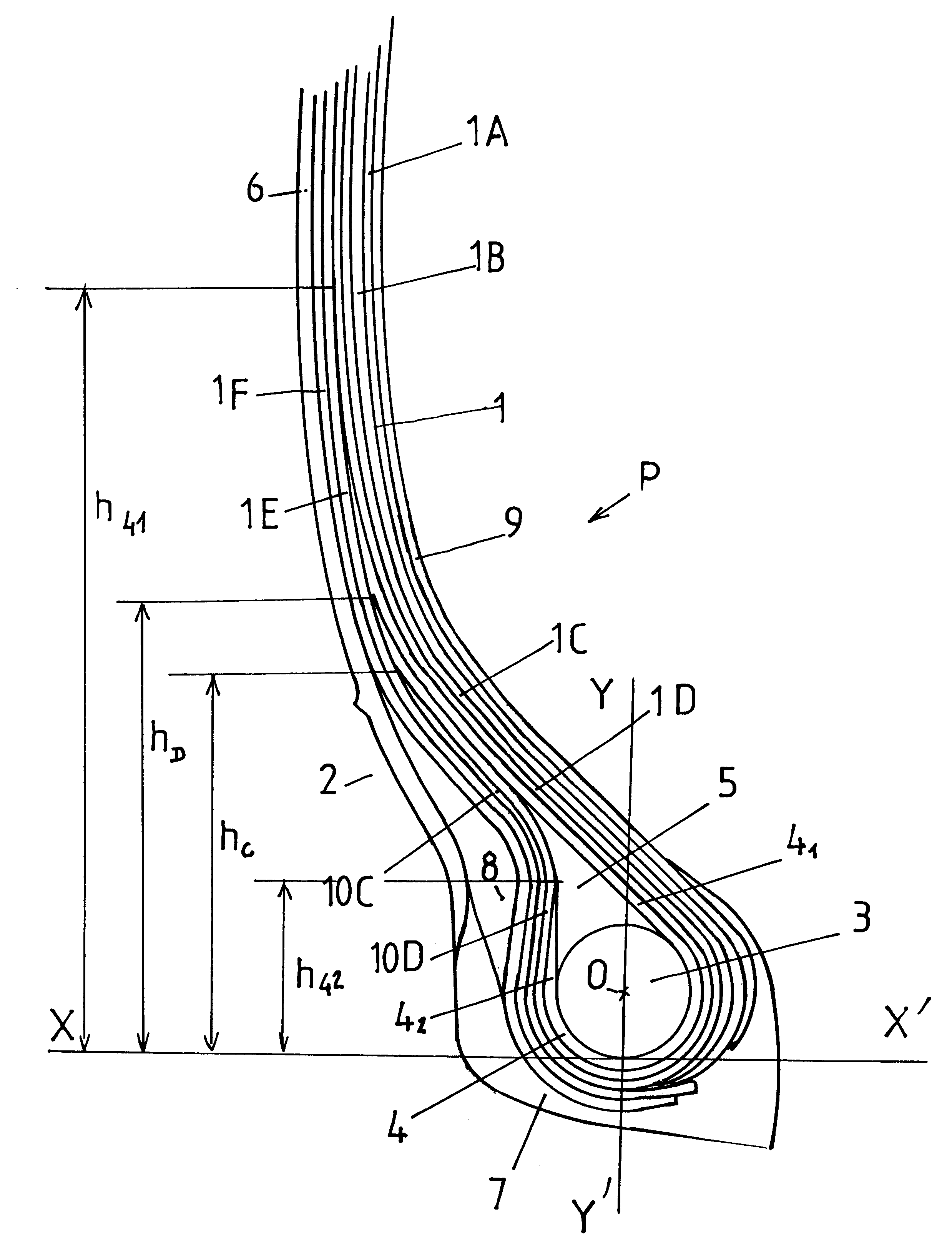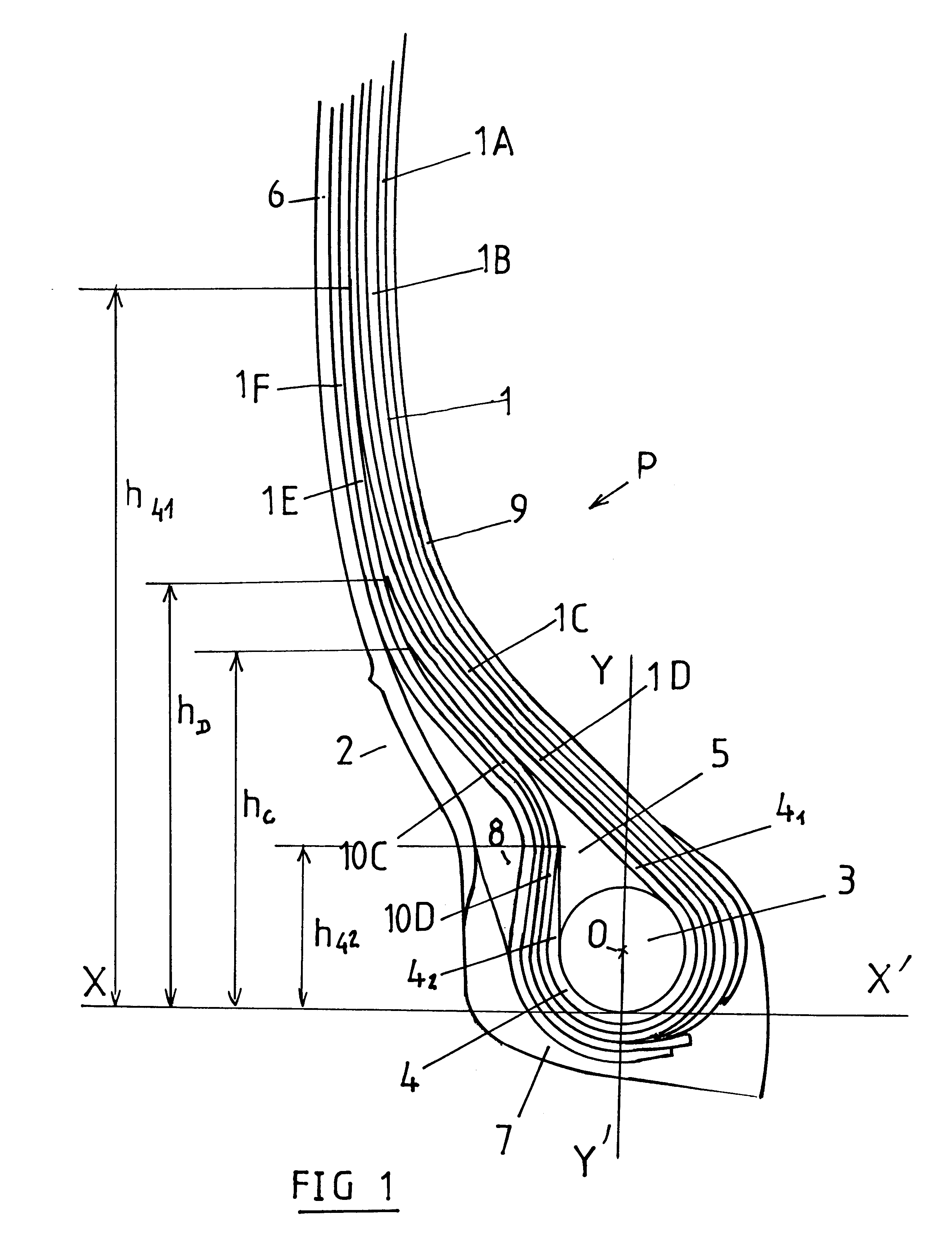Carcass reinforcement for aircraft tires
a technology for aircraft tires and carcasses, applied in the field of tires, can solve the problems of increased hysteresis losses, low fatigue strength of beads, and higher operating temperatures
- Summary
- Abstract
- Description
- Claims
- Application Information
AI Technical Summary
Benefits of technology
Problems solved by technology
Method used
Image
Examples
Embodiment Construction
The example given is that of a tire of standard size 46.times.17.0 R 20 (standards of the Tire and Rim Association). The carcass reinforcement 1 is formed from six plies 1A to 1F of radial textile cords made of aliphatic polyamide (in particular of 188 / 3 or 210 / 3 nylon cords). Radial cords of an aircraft tire are to be understood as meaning cords forming angles which may be in the range 90.degree..+-.15.degree. with the circumferential direction. Among the six plies, the four plies 1A to 1D are referred to as axially inner plies, in the sidewalls and beads. Two (IC and ID) of the four plies are wound in each bead 2 around an annular reinforcing element in the form of a bead wire 3, having a circular cross-section in the embodiment shown, from the inside to the outside of the tire P, to form upturns 10C and 10D.
The ends of the upturns 10C and 10D are at respective heights hC and hD from the base of the bead, represented by a line XX' parallel to the axis of rotation of the tire and p...
PUM
 Login to View More
Login to View More Abstract
Description
Claims
Application Information
 Login to View More
Login to View More - R&D
- Intellectual Property
- Life Sciences
- Materials
- Tech Scout
- Unparalleled Data Quality
- Higher Quality Content
- 60% Fewer Hallucinations
Browse by: Latest US Patents, China's latest patents, Technical Efficacy Thesaurus, Application Domain, Technology Topic, Popular Technical Reports.
© 2025 PatSnap. All rights reserved.Legal|Privacy policy|Modern Slavery Act Transparency Statement|Sitemap|About US| Contact US: help@patsnap.com


